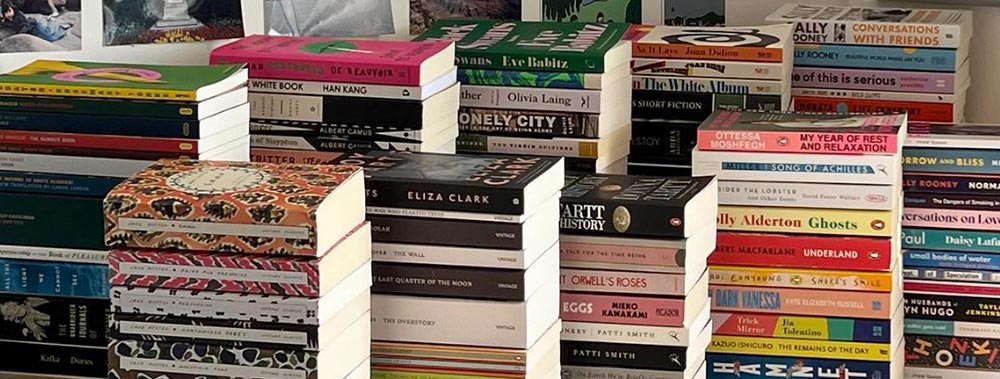Sula: Summary, Plot, Characters, Literary Analysis & More
“Sula” is a novel by Toni Morrison, first published in 1973.
This novel was one of Morrison’s greatest critical and popular successes. “Sula” tells the story of two childhood best friends, Sula and Nel, as they navigate the complexities of their friendship and the Black community in their town.
The narrative spans several decades and addresses issues of social conventions, love, friendship, and the impact of personal choices on the community, all culminating in a poignant reflection on human worth and the consequences of individual actions.

"Sula" is a novel written by Toni Morrison, published in 1973. The story unfolds in the fictional town of The Bottom, an African American community located in Ohio.
Table of Contents
Summary The Plot Characters Key Themes Genres Language used Literary devices Summing upThe Plot
In “Sula” by Toni Morrison, the plot revolves around the lifelong friendship between Sula and Nel, set in the Black community of their town.
When Sula dies, it triggers a series of events that impact everyone, including Sula’s mother, Eva Peace, and Jude Greene.
Sula’s death serves as a catalyst, revealing deep-seated emotions, secrets, and the complex interplay of personal choices within the community, ultimately exploring themes of identity, morality, and the lasting effects of individual actions.
Characters
In Toni Morrison’s “Sula,” a diverse and multifaceted cast of characters populates the novel, breathing life into the narrative and providing a rich tapestry of experiences and perspectives.
Sula Peace
The central character, Sula is a free-spirited and enigmatic figure who challenges societal norms with her unconventional choices. Her actions have a profound impact on the community and elicit a mix of admiration and resentment.
Nel Wright
Sula’s best friend, Nel takes a more conventional path, striving to conform to societal expectations while wrestling with the complex dynamics of her friendship with Sula. Her character serves as a contrast to Sula and explores themes of loyalty and conformity.
Eva Peace
Sula’s indomitable grandmother, Eva is known for her resilience and unorthodox parenting methods. Her character embodies a strength that has been passed down through generations and significantly influences the lives of Sula and Nel.
Jude Greene
A pivotal figure in Sula’s life, Jude’s choices and actions have a profound impact on the trajectory of both Sula and their entire community. His character reflects the complexities of human relationships and the enduring consequences of individual decisions.
Key Themes
In “Sula” by Toni Morrison, a deeply thought-provoking narrative unfolds, exploring a range of themes that reflect the complexities of life within the Black community.
Friendship and Betrayal
The novel delves into the intricate dynamics of friendship, as exemplified by the relationship between Sula and Nel. It portrays the loyalty, tensions, and betrayals that can define such bonds, and how they ripple through the community.
Individual Choices and Consequences
Through the characters of Sula and Nel, Morrison highlights the far-reaching effects of personal decisions on both individuals and the collective community. The consequences of their choices serve as a lens through which larger societal issues are examined.
Identity and Community
“Sula” addresses the struggle for individual identity within the context of a close-knit Black community. The characters’ experiences, social conventions, and the impact of their actions collectively illustrate the tension between personal identity and the sense of belonging to a broader community, grappling with social class, race, and societal expectations.
Genres in Sula
“Sula” by Toni Morrison is a multifaceted literary work that defies easy categorization, weaving together various genres to create a compelling narrative.
Bildungsroman
While not a traditional coming-of-age story, “Sula” incorporates elements of the bildungsroman genre as it traces the personal growth and development of its central characters, Sula and Nel, over several decades. The novel explores their evolving understanding of self, society, and their friendship.
Social Realism
Morrison’s portrayal of the Black community in the novel aligns with the social realism genre, as it vividly depicts the challenges, social conventions, and relationships within this community. It provides a nuanced view of the characters’ lives and the broader societal dynamics.
Magical Realism
The novel contains elements of magical realism, subtly interweaving fantastical and supernatural elements into the everyday lives of the characters. This genre adds a layer of mystery and symbolism, enriching the narrative with deeper layers of meaning, especially in moments like Sula’s death and “National Suicide Day.”
Language used in Sula
Toni Morrison’s writing style in “Sula” is rich and evocative, weaving a tapestry of emotions and atmosphere. Her prose is both poetic and grounded in everyday life. She employs vivid imagery to bring the characters and their surroundings to life.
The dialogues are authentic, reflecting the cultural and social nuances of the Black community. The language used for moments like Nel visiting Eva, Sula leaving, or befriending Sula is imbued with a sense of history and emotion, enhancing the reader’s connection to the characters’ experiences.
Literary devices in Sula
In “Sula,” Toni Morrison masterfully employs various literary devices to enhance the storytelling. Symbolism plays a significant role, with Sula’s grave symbolizing the lingering impact of her presence and Sula’s return symbolizing the revival of past connections.
Morrison’s use of flashbacks and nonlinear narrative structure adds depth and complexity to the plot. The novel’s vivid and evocative imagery, along with its exploration of themes, acts as metaphorical devices, enabling readers to engage with the deeper layers of the story.
Similes
Toni Morrison skillfully employs similes in “Sula” to enhance the reader’s understanding and engagement. For instance, when Sula leaves, her departure is described as “like a storm lifting.” This simile evokes the idea of tumultuous change, emphasizing the transformative impact of her absence.
Additionally, when Hannah dies, her body is compared to “the soft center of a summer pear.” This simile juxtaposes the fragility of life with the fruit’s sweetness, creating a poignant image of mortality.
Metaphors
In “Sula,” Morrison uses metaphors to convey deeper meanings and emotional resonance. When Nel visits Eva, the act is metaphorically likened to “looking into the kitchen of a strange house.”
This metaphor emphasizes the sense of unfamiliarity and estrangement, reflecting the evolving nature of their relationship. Sula’s return to the community serves as a metaphorical rebirth, breathing new life into the once-familiar town, which had become stagnant.
Analogies
Analogies in “Sula” by Toni Morrison aid readers in grasping complex ideas. The analogy of Nel’s wedding to “a miracle she had waited for” highlights the rarity and significance of this event in Nel’s life. It conveys the idea of hope and fulfillment.
The character Helene Sabat’s life is analogized to “a house where the doors are never locked,” which symbolizes her open and welcoming nature. These analogies serve to provide insight into the characters’ experiences and emotions, making the narrative more relatable and vivid.
Imagery
Toni Morrison’s “Sula” is a masterclass in employing vivid imagery to immerse readers in sensory experiences. When Nel befriends Sula, the imagery evokes a lush, vibrant connection: “They lay on the banks of the river, the water reflected the sun.”
This imagery immerses the reader in the warmth and intimacy of their friendship. When Sula returns, Morrison’s vivid descriptions breathe life into the town’s transformation, from “the old stiffness” to “bright colors of paradise,” engaging readers on an emotional and sensory level.
Symbolism
Symbolism is woven throughout the narrative, enriching the themes and characters. Sula’s return to the community symbolizes the revival of long-forgotten connections, representing the cyclical nature of life and the importance of reconciliation.
Additionally, the befriendment of Nel and Sula is symbolic of the duality of human nature, exploring the tension between conformity and individuality. These symbols connect to larger themes of identity, friendship, and the enduring impact of personal choices within the Black community.
Personification
Toni Morrison’s “Sula” skillfully employs personification to breathe life into characters and settings. For example, when Nel realizes the depth of her emotions, the river “sang with her.”
This personification of the river as a singing entity gives a sense of the river sharing in Nel’s feelings, deepening the emotional resonance of the moment. Personification adds layers of emotion and connection between the characters and their environment.
Hyperbole
Hyperbole is used in “Sula” to create dramatic and striking effects. When Jude leaves Nel, it is described as “the end of everything.”
This hyperbolic statement heightens the emotional intensity of the moment, emphasizing the magnitude of the event in Nel’s life. Such exaggerations amplify the narrative’s impact and illuminate the characters’ experiences.
Irony
Toni Morrison employs various forms of irony in “Sula” to add complexity to the story. Dramatic irony is evident when readers know more about the characters’ lives and choices than the characters themselves, creating tension and anticipation.
Verbal irony is present in moments like the concept of the “tar baby,” where the words carry a different meaning than what they seem, adding depth and cultural context to the narrative.
The irony in the nursing home scenes showcases the contrast between the care provided and the neglect suffered by the residents, highlighting societal disparities. Irony in “Sula” serves to engage readers and underscore the broader themes of the novel.
Juxtaposition
Toni Morrison’s “Sula” artfully employs juxtaposition to emphasize stark contrasts and evoke thought-provoking scenarios. The character of Helene Sabat, whose life appears conventional and orderly, is juxtaposed against Sula’s unorthodox and free-spirited nature.
This contrast highlights the duality of human experiences within the same community, exploring the tensions between conformity and individuality, and offering a nuanced perspective on societal norms and values.
Paradox
“Sula” is rife with paradoxical situations and statements that deepen its themes. One such paradox is the departure of Nel’s husband, a seemingly ordinary event that marks the “end of everything” in Nel’s life. This paradox underscores the profound emotional impact of personal choices.
Another paradox lies in the portrayal of three young children as both symbols of hope and the burden of responsibility. These paradoxes enrich the narrative by challenging conventional interpretations and provoking reflection on the characters’ lives.
Allegory
While “Sula” by Toni Morrison is primarily a character-driven narrative, it contains allegorical elements that symbolize broader themes.
The passage of “ten years” within the story acts as an allegory for the passage of time itself, representing change, growth, and the evolution of the characters’ lives.
This time span serves as a reflection of the characters’ journeys and the shifting dynamics within the Black community.
Repetition
Toni Morrison employs repetition in “Sula” to emphasize key themes and evoke emotional impact. Through the repetition of certain events, such as Nel’s marriage or the tragic death of Chicken Little, Morrison underscores the cyclical nature of life and the persistent influence of these moments on the characters’ lives.
Repetition serves as a reminder of the characters’ interconnectedness and the enduring consequences of their actions, ultimately contributing to the novel’s emotional depth.
The Use of Dialogue
In “Sula,” dialogue serves as a powerful tool for character development, thematic exploration, and narrative tension. Through conversations, the complexities of characters such as Helene Wright and Hannah Peace are revealed, shedding light on their unique backgrounds and struggles.
Dialogues between the young boy and Eva in New Orleans illustrate themes of community and societal norms. Dialogue in the novel is not just a means of communication but a lens through which the characters’ personalities, values, and experiences are unveiled.
Parallelism
In “Sula” by Toni Morrison, parallelism is subtly interwoven into the narrative, emphasizing the interconnectedness of the characters’ lives. The departure of Jude from Nel and Sula’s enduring existence serves as parallel stories that echo the themes of choice and consequence.
These parallel narratives showcase how individual decisions can lead to vastly different life trajectories, underlining the novel’s exploration of personal choices and their far-reaching effects within the context of the Black community.
Parallelism reinforces the novel’s overarching message about the enduring impact of decisions on individuals and their communities.
Sula: FAQs
Explore these frequently asked questions (FAQ) about Toni Morrison’s “Sula.” This guide provides insights into the novel’s themes, characters, and literary elements, offering a deeper understanding of this captivating work.
What is the main conflict in Sula?
The main conflict in “Sula” revolves around the tension between individuality and conformity within the Black community, as two lifelong friends, Sula and Nel, make contrasting life choices, challenging societal norms.
What happens to Sula?
Sula dies in the novel. Her death triggers reflection on the impact of her unconventional choices, particularly her influence on Nel and the broader community.
What is Sula based on?
“Sula” is a work of fiction by Toni Morrison, and it’s not directly based on specific real-life events or individuals. However, it draws inspiration from African-American culture, history, and experiences.
What is the summary of the Sula?
“Sula” is a novel by Toni Morrison that tells the story of the complex friendship between Sula and Nel, exploring themes of identity, friendship, and the consequences of personal choices within a Black community over several decades.
Summing up: Sula: Summary, Plot & More
Toni Morrison masterfully navigates the complexities of identity, friendship, and the enduring consequences of personal choices within the Black community. Through vivid characters, intricate storytelling, and a rich tapestry of themes, Morrison delves deep into the human experience.
The novel’s enduring appeal lies in its ability to resonate with readers, offering profound insights into the human condition and challenging societal norms. “Sula” remains a timeless exploration of personal freedom, connection, and the multi-faceted nature of life, leaving an indelible mark on the literary landscape.
Other Notable Works by Toni Morrison
If you are interested in “Sula”, you may be interested in other works by Toni Morrison including:
- “Beloved” (1987): A haunting tale of the legacy of slavery, it won the Pulitzer Prize for Fiction.
- “Song of Solomon” (1977): A coming-of-age story that explores themes of identity, family, and heritage.
- “The Bluest Eye” (1970): Morrison’s debut novel, addressing issues of beauty, race, and self-worth.
- “Paradise” (1997): A multi-narrative exploration of race, gender, and societal divisions.
- “Jazz” (1992): A poetic narrative set in the Harlem Renaissance, delving into themes of love and identity.







